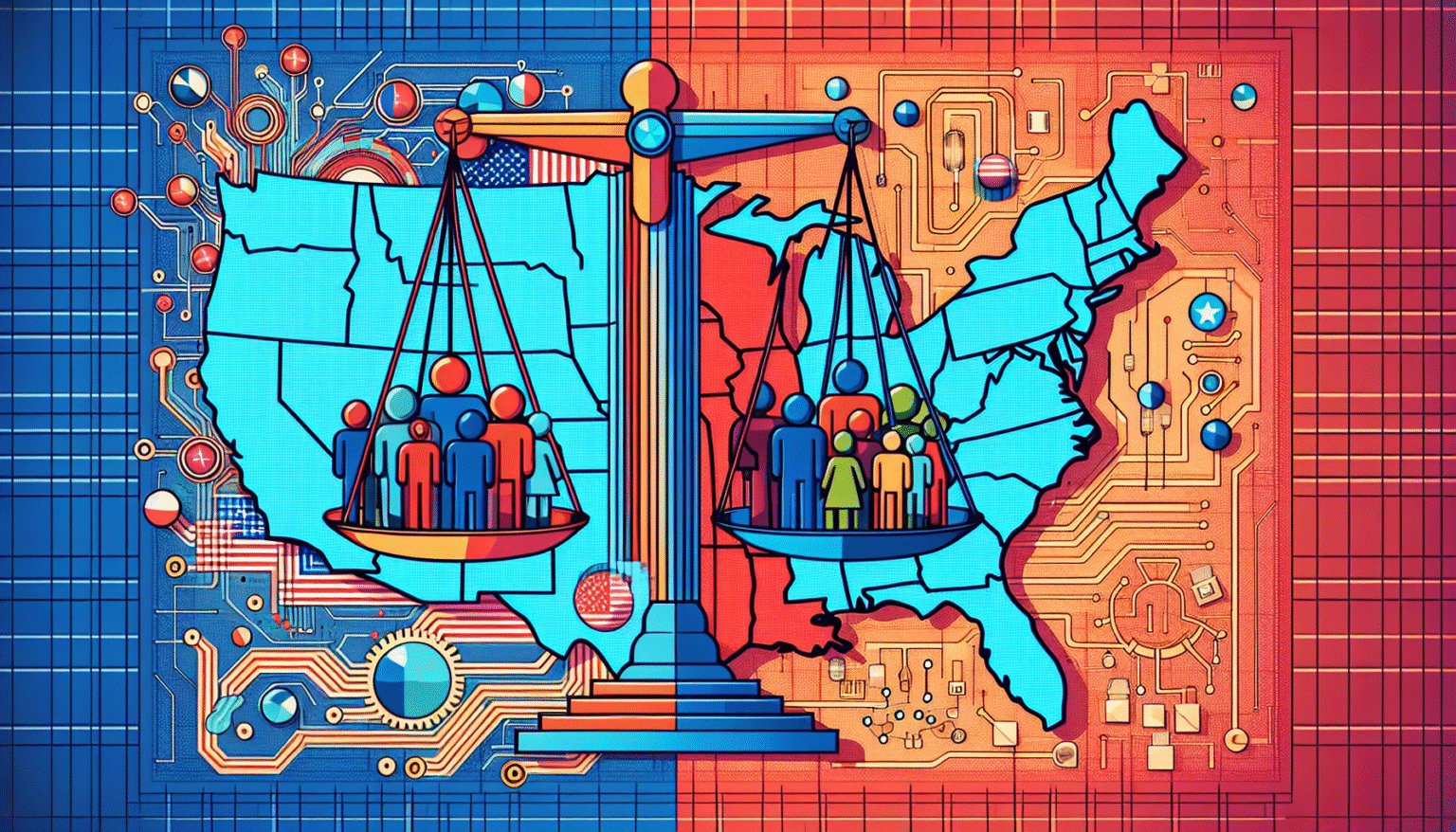Political parties have long served as the backbone of American democracy, yet they are currently at a crossroads. The shifting political landscape necessitates an examination of the potential future of political parties in a changing America, shaped by evolving voter demographics, technological advancements, and societal trends.
### The Influence of Demographics
Demographic changes are reshaping the electoral landscape, making it imperative for political parties to adapt their strategies. The United States is growing increasingly diverse, with minority populations projected to make up a larger percentage of the electorate by 2040. Latino, Black, and Asian American communities are not only expanding but also becoming more active in politics. This shift compels parties to broaden their narratives and policy platforms to connect with a wider range of voters.
#### Engaging Underrepresented Groups
The future political parties must prioritize outreach to underrepresented groups to build inclusive coalitions. This involves more than just token representation; it requires genuine engagement on issues that matter deeply to these communities. Parties will need to address systemic inequalities, advocate for social justice, and develop policies that resonate with young voters disillusioned by traditional politics.
### The Role of Technology
Technology continues to transform political engagement and campaigning. With the rise of social media and digital communication, political parties can reach constituents more efficiently and responsively. The utilization of data analytics allows for targeted messaging that speaks to the specific interests of voters.
#### Digital Campaigning
Digital platforms are reimagining traditional campaign strategies. Future political parties will increasingly rely on sophisticated data harvesting techniques to analyze voting patterns and preferences. By engaging voters through social media, parties can foster a sense of community and create interactive platforms for discussion. This ongoing conversation is vital for building trust and motivating grassroots involvement.
#### Mobilization and Fundraising
Crowdfunding and peer-to-peer fundraising have democratized the ability to raise campaign funds. Political parties must harness these tools to engage with grassroots supporters, moving away from reliance on large donations from a few affluent donors. A grassroots-focused funding approach allows for more equitable campaigning, enabling candidates from diverse backgrounds to compete on equal footing.
### Ideological Shifts
As political polarization intensifies, many Americans express frustration with the two-party system. This environment raises questions about the future role of political parties. In response to dissatisfaction with the mainstream, we may see the emergence of third parties or independent candidates gaining traction.
#### The Rise of Independent Voters
Independent voters currently represent a significant segment of the electorate. According to a recent Gallup poll, nearly 40% of voters identify as independent, indicating a growing trend away from traditional party affiliations. Future political parties will have to consider how to appeal to these swing voters. Adopting more flexible platforms that address issues rather than strictly adhering to party lines may draw independent voters back into the fold.
#### Progressive versus Moderate Factions
Within both major parties, ideological divides are widening. Progressive factions advocate for sweeping reforms addressing climate change, wealth inequality, and healthcare access, while moderates often favor more incremental changes. Future political parties might need to navigate the delicate balance between these competing ideologies. Successfully managing internal factionalism will be crucial for a party’s cohesion and electoral success, allowing for a platform that unites rather than divides.
### Shifts in Political Engagement
Political engagement is evolving beyond traditional voting patterns. Younger voters are more likely to participate in direct-action movements, such as protests and advocacy campaigns, rather than through the ballot box alone. Political parties must adapt to these changes and utilize alternative methods of engagement to reach a more activist-oriented electorate.
#### Grassroots Movements
The future of political parties may increasingly rely on grassroots movements to cultivate local support and champion specific issues. By aligning with these movements, parties can energize their base, encourage voter participation, and harness the power of collective action. Political parties that embrace grassroots activism will be better positioned to influence policy and galvanize support in the long term.
### Global Comparisons and American Identity
The dynamics of political parties in America cannot be fully understood without considering the global context. Many democracies face similar challenges regarding citizen engagement, radicalization, and the rise of populism. By evaluating successful international models, American political parties can draw lessons on how to remain relevant and responsive to their constituents.
#### Lessons from Abroad
For instance, countries like Germany and Canada exhibit functional multi-party systems that offer various political choices, fostering greater voter involvement. These models emphasize coalition-building, where parties collaborate around shared goals, addressing the complexities of diverse societies. The adaptation of these strategies in American contexts may help alleviate partisan gridlock and promote a more cooperative political discourse.
### The Importance of Policy Innovation
In a rapidly changing world, the relevance of political parties will hinge on their capacity for policy innovation. As societal challenges such as climate change, technological disruption, and public health crises emerge, parties must be equipped with forward-thinking policies that address both current and future issues.
#### Creating Forward-Looking Policies
To resonate with voters, political parties must engage in continuous policy review and innovation. Emphasizing science-based policies, particularly on climate change and healthcare reform, can position parties as proactive rather than reactive. Building partnerships with think tanks, civil society organizations, and academic institutions will catalyze the generation of evidence-based policies that meet the demands of a changing electorate.
#### Implementing Responsive Governance
Responsive governance requires parties to be attuned to the needs of their constituents. Regular surveys and town hall meetings can facilitate ongoing dialogue. Parties that can demonstrate effective listen-and-respond strategies will likely gain voter trust and loyalty in an era of skepticism towards conventional political institutions.
### The Future of Political Parties
As America undergoes significant transformations across multiple fronts, the future of political parties lies in their adaptability and responsiveness. The ability to engage diverse demographics, harness technology, foster inclusivity, and innovate policy will set successful parties apart in a rapidly changing political landscape. Whether the traditional two-party system evolves, experiences fragmentation, or integrates emerging third-party movements, the outcome will shape American democracy for generations to come. The challenge now lies in how these parties recalibrate and respond to the ever-evolving demands of their constituents, ensuring they remain relevant and effective in a dynamic landscape.






